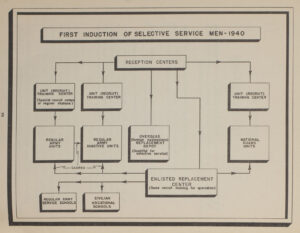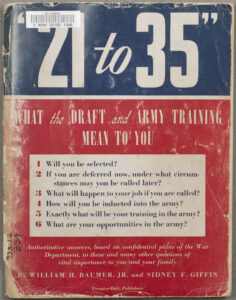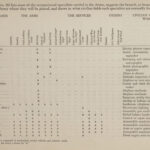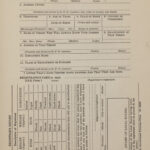In 1940, the United States had not yet entered World War II. The year prior had seen the German invasion of Poland, and war declared on Germany by the United Kingdom, France, New Zealand and Australia. On September 5, 1939, the United States announced its neutrality in the war. Some were surprised, then, when President Franklin Delano Roosevelt signed the Selective Training and Service Act into law on September 27, 1940. This was the first time a draft had been instituted in the U.S. during peacetime. The Act required that all American males age 21 to 35 years old register for the draft. Men were then drafted for military training for a period of 12 months according to lottery.
We can assume that the draft loomed large over the young men of MIT. The year the draft was instituted, Prentice-Hall published this book, which had been written by two West Point instructors to explain the draft system and army service. MIT purchased it in February of 1941, ten months prior to the attack on Pearl Harbor (which would trigger the  United States’ entry into the war).
United States’ entry into the war).
The Libraries’ copy is well worn: the back cover is missing and there is obvious wear to the pages. The check-out slip is torn, but still retains the date of the first time this book circulated, very shortly after it entered the collections.
MIT made some extremely important technological contributions to the Allies during World War II, including the development of radar technology, Doc Edgerton’s strobe reconnaissance photographs, and Charles Draper’s Mark 14 gun sight. This tattered book provides a reminder of other contributions and sacrifices, most of them unheralded, made by Institute men, ages 21 to 35, who were called upon to serve.



